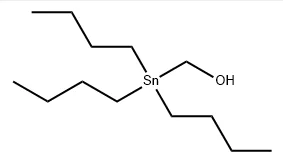https://www.runnermodels.com/Resin-Casting-Technology-Behind-the-Sports-Resin-Model-Car.html
In the world of collectible scale models, few pieces can match the detail, realism, and artistry of a sports resin model car. These miniature masterpieces, often built at 1:18 or 1:43 scale, are not merely toys or simple decorative objects—they are the result of meticulous craftsmanship and advanced material science. At the heart of their creation lies a process known as resin casting, a specialized manufacturing technique that enables unparalleled accuracy in replicating the sleek curves, aerodynamic lines, and distinctive features of high-performance sports cars. Zhongda Model Co., Ltd is one of the industry leaders that has refined this process to an art form.
Why Resin Casting is the Preferred Method for Sports Resin Model Cars
Compared to traditional die-cast methods that use metal alloys, resin casting provides greater flexibility in capturing intricate details. Resin allows for sharper edges, smoother surfaces, and finer textures, which are crucial when replicating the dynamic and often complex design elements of modern sports cars. From aggressive front grills to subtle door creases, resin enables modelers to bring every nuance of the original vehicle to life with precision.
Material Selection: The Foundation of Quality
The journey of a sports resin model car begins with the selection of the right resin formulation. Not all resins are created equal. For high-fidelity modeling, polyurethane-based resins are preferred for their excellent flow characteristics, dimensional stability, and low shrinkage rates. These attributes are essential when duplicating fine design elements without distortion or loss of detail.
Zhongda Model Co., Ltd employs custom-blended resins that are optimized for strength and surface finish. The resin must strike a balance: it should be strong enough to hold thin features like side mirrors or spoilers, but not so brittle that it risks chipping during finishing or handling.
The Resin Casting Process: Step-by-Step Precision
-
Master Pattern Creation
The process begins with a master model, typically handcrafted or CNC-machined with extreme accuracy. This master serves as the template for the mold. -
Silicone Mold Production
A high-grade silicone mold is created around the master. Silicone is ideal for its flexibility and ability to capture microscopic surface textures. -
Mixing and Pouring Resin
The resin components—typically a two-part system—are mixed under vacuum to eliminate air bubbles, which can cause surface imperfections. The liquid resin is then poured or injected into the silicone mold. -
Curing and Demolding
Once the mold is filled, it undergoes a curing process, either at room temperature or in a heated chamber, to harden the resin. After curing, the model is carefully removed from the mold. -
Post-Curing and Trimming
To enhance material properties, some models undergo post-curing under controlled heat. Excess resin, flash, and sprue marks are trimmed manually, ensuring a clean and crisp silhouette.
Surface Finishing: From Raw Cast to Automotive Elegance
After the casting phase, the model enters a finishing workflow that includes sanding, priming, painting, and assembly. The surface is smoothed using fine abrasives, and multiple layers of automotive-grade paints are applied to replicate real car colors and finishes—be it a glossy Ferrari red, a matte black Lamborghini finish, or carbon fiber detailing.
Decals, chrome trims, and clear-coat finishes are applied with the same care and standards as full-sized car manufacturing, albeit on a micro scale. The clear resin parts, such as windshields and headlights, are cast separately using optical-grade resin to ensure transparency and realism.
The Advantages of Resin in Capturing Authenticity
One of the defining characteristics of resin casting is low-volume, high-precision production. Unlike die-casting, which is optimized for mass production, resin casting allows manufacturers like Zhongda Model Co., Ltd to focus on quality over quantity. This process is ideal for producing limited-edition models that cater to discerning collectors who value authenticity, detail, and exclusivity.
Moreover, the reduced tooling cost and faster prototyping cycles mean that new sports car models can be brought to market quicker, often ahead of mass-produced versions, giving resin model car collectors early access to the latest supercar designs.
The sports resin model car is not just a miniature; it is a celebration of automotive design and craftsmanship. The resin casting process empowers modelers to achieve a level of detail and accuracy that is simply unattainable through traditional metal casting methods. From the moment the resin is mixed to the final brush of paint, each step reflects a commitment to precision and passion.
For enthusiasts and collectors alike, owning a resin model from Zhongda Model Co., Ltd is more than acquiring a scaled-down version of their favorite sports car—it's about owning a piece of automotive artistry, shaped by the science of resin and the spirit of performance.
https://www.runnermodels.com/Novitec-812-Superfast.html
https://www.runnermodels.com/Runner-Model-Novitec-812-GTS-N-Largo-S.html
https://www.runnermodels.com/McLaren-F1-GTR.html
https://www.runnermodels.com/LAMBORGHINI-AVENTADOR-SVJ.html
https://www.runnermodels.com/Resin-Casting-Technology-Behind-the-Sports-Resin-Model-Car.html
Zhongda Model Co., Ltd

